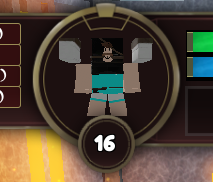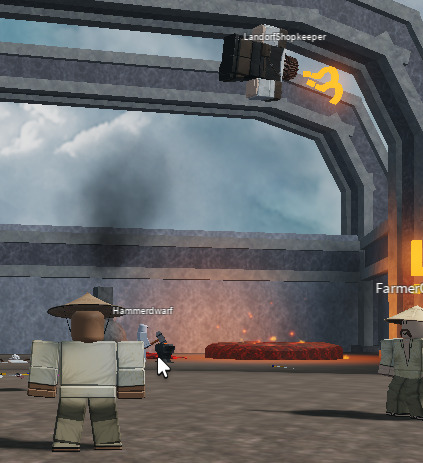- What do you want to achieve? Keep it simple and clear!
Apply any jacket accessory to a live viewport of a character with correct placement.
-
What is the issue? Include screenshots / videos if possible!

When applied directly to a viewport model vs what happens if I keep the model in workspace

The character erratically flings away to the 7 galaxies, but only locally, not replicated to other clients since the viewport model is created by a localscript. This wouldn’t happen if I didn’t introduce a wait() time, but introducing wait is necessary, because the accessories take time to apply properly. (I know that is simply strange, but instantly applying them and throwing the model into UI does the same thing as the previous picture shows)
- What solutions have you tried so far? Did you look for solutions on the Developer Hub?
Tried applying the accessories inside of the viewport, they mess up. Tried parenting accessories to the viewport character, they still mess up. The closest to a fix I got is setting the wait() the shortest possible and setting the CFrame of the target character back to its original position. This however does not work if the local client lags a little, causing the character to fling on any lower performance system.
The current code (half of it stolen from somewhere online):
FIRST FUNCTION TO RUN – here I made jackets go into a table to be applied later, as they were the problem. All other accessories are replicated immediately.
local function HandleChar()
--warn("Handle char")
table.clear(RenderObjects)
ViewPort:ClearAllChildren()
local Viewmodel = Instance.new("Model")
Viewmodel.Name = "PlayerViewmodel"
--Viewmodel.Parent = ViewPort
Viewmodel.Parent = workspace.Temp
local CharObjects = Character:GetDescendants()
local accessoryTable = {}
for i, Object in pairs(CharObjects) do
if Object:IsA("Accessory") then
if Object.AccessoryType == Enum.AccessoryType.Jacket then
print("jacket found")
table.insert(accessoryTable, Object)
else
local RenderClone = AddObject(Object)
if RenderClone then
RenderClone.Parent = Viewmodel
end
end
elseif Object.Parent:IsA("Accessory") then
if Object.Parent.AccessoryType ~= Enum.AccessoryType.Jacket then
local RenderClone = AddObject(Object)
if RenderClone then
RenderClone.Parent = Viewmodel
end
end
else
local RenderClone = AddObject(Object)
if RenderClone then
RenderClone.Parent = Viewmodel
end
end
end
for i1, m1 in pairs(accessoryTable) do
local newAcc = m1:Clone()
--Viewmodel:FindFirstChild(m1.Name):Destroy()
Viewmodel:FindFirstChild("Humanoid"):AddAccessory(newAcc)
end
Character.DescendantAdded:Connect(function(NewObject)
local RenderClone = AddObject(NewObject)
if RenderClone then
RenderClone.Parent = Viewmodel
end
end)
if Character:FindFirstChild("Humanoid") and #accessoryTable > 0 then
local currLoc = Character.HumanoidRootPart.CFrame
Viewmodel.PrimaryPart = Viewmodel:FindFirstChild("HumanoidRootPart")
Viewmodel.PrimaryPart:PivotTo(workspace.VIEWPORTPLACE.CFrame)
wait()
Viewmodel.Parent = ViewPort
Character.HumanoidRootPart.CFrame = currLoc
end
Viewmodel.Parent = ViewPort
Character.DescendantRemoving:Connect(function(OldObject)
RemoveObject(OldObject)
end)
end
SECOND FUNCTION TO RUN
local ValidClasses = {
["MeshPart"] = true; ["Part"] = true; ["Accoutrement"] = true;
["Pants"] = true; ["Shirt"] = true;
["Humanoid"] = true; ["BasePart"] = true;
}
local function AddObject(Object)
if not ValidClasses[Object.ClassName] then
return nil
end
-- Create clone, regardless of Archivable
local a = Object.Archivable
Object.Archivable = true
local RenderClone = Object:Clone()
Object.Archivable = a
if Object.ClassName == "MeshPart" or Object.ClassName == "Part" or Object.ClassName == "BasePart" then
RenderObjects[Object] = RenderClone
elseif Object:IsA("Accoutrement") then
RenderObjects[Object.Handle] = RenderClone.Handle
elseif Object.ClassName == "Humanoid" then
--Disable all states. We only want it for clothing wrapping.
RenderClone:SetStateEnabled(Enum.HumanoidStateType.FallingDown, false)
RenderClone:SetStateEnabled(Enum.HumanoidStateType.Running, false)
RenderClone:SetStateEnabled(Enum.HumanoidStateType.RunningNoPhysics, false)
RenderClone:SetStateEnabled(Enum.HumanoidStateType.Climbing, false)
RenderClone:SetStateEnabled(Enum.HumanoidStateType.StrafingNoPhysics, false)
RenderClone:SetStateEnabled(Enum.HumanoidStateType.Ragdoll, false)
RenderClone:SetStateEnabled(Enum.HumanoidStateType.GettingUp, false)
RenderClone:SetStateEnabled(Enum.HumanoidStateType.Jumping, false)
RenderClone:SetStateEnabled(Enum.HumanoidStateType.Landed, false)
RenderClone:SetStateEnabled(Enum.HumanoidStateType.Flying, false)
RenderClone:SetStateEnabled(Enum.HumanoidStateType.Freefall, false)
RenderClone:SetStateEnabled(Enum.HumanoidStateType.Seated, false)
RenderClone:SetStateEnabled(Enum.HumanoidStateType.PlatformStanding, false)
RenderClone:SetStateEnabled(Enum.HumanoidStateType.Dead, false)
RenderClone:SetStateEnabled(Enum.HumanoidStateType.Swimming, false)
RenderClone:SetStateEnabled(Enum.HumanoidStateType.Physics, false)
RenderClone.DisplayDistanceType = Enum.HumanoidDisplayDistanceType.None
end
--print("Added",Object)
return RenderClone
end
